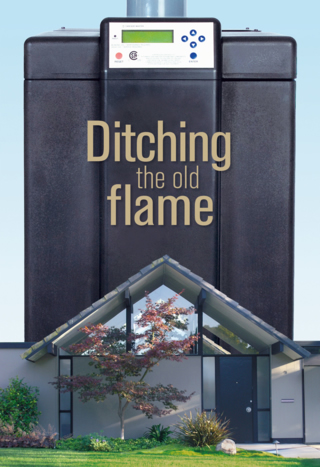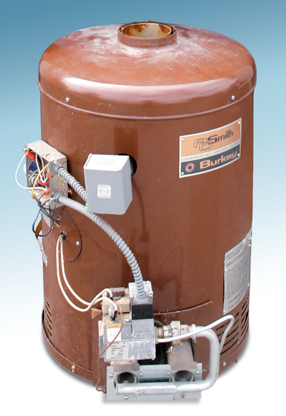Ditching the Old Flame
Things aren't made like they used to be—and in some cases, that's a good thing.
The original A. O. Smith and Raypak boilers that have been heating Eichler homes for the past 60 years may have aged gracefully, but their efficiency and performance levels have also diminished, and some have begun to emit potentially dangerous levels of carbon monoxide.
 |
|
|
Like old flames, just because they've hung around for a long time, it doesn't mean they're still good for you.
If your boiler is mounted on the floor, rather than on a stand as code now requires, there's a good chance it's an old barrel-shaped A. O. Smith original, says Bob Reid, owner of Reid Heating and Energy, in San Rafael. “These might have been 70-percent efficient when they were new, but now they've fallen to 40- to 60-percent efficiency today, which is going to cost you a lot more money to heat up your home.”
Some telltale signs that your boiler needs to be serviced or replaced include a higher-than-usual gas bill, unusual smells, peculiar sounds, or no sound at all. A declining unit also causes poor heating in areas of the house farthest from the boiler, irregular pressure fluctuations, an unusually hot boiler and boiler room, and discoloration or burns on the boiler jacket.
“In many instances, problems with boilers can be repaired, but the cost of repair, especially on a unit that is over 20 years old, is often not cost effective,” says Mike LaChance, owner of LaChance Radiant Heating, based on the Peninsula. If a boiler is leaking water from the inside, it is usually a good sign that it cannot be repaired and needs to be replaced.
In the automotive industry, early technology was simple and straightforward, allowing car owners to work on their own cars for simple oil changes and spark plug replacements. As technology advanced and became more complicated, however, those once-simple maintenance tasks required expert mechanics. The same goes for boilers.
 |
|
|
“The old boilers had universal parts that were easier to find, but the new models require you to use the manufacturer's parts, and someone has to be trained to work on them,” says Lance Eastman, owner of Bay Area Plumbing & Heating in Redwood City.
A central furnace or boiler's efficiency is measured by annual fuel utilization efficiency (AFUE). The Federal Trade Commission requires manufacturers of boilers today to disclose their AFUE so consumers are able to compare heating efficiencies from one model to the next. AFUE is a measure of how energy efficient an appliance is with fuel use over the course of a typical year. As an example, a boiler with an AFUE of 92 percent uses seven percent less fuel to heat the same space as a boiler with an AFUE of 85 percent.
Much has changed in boiler system technology over the years. Older boiler systems had efficiency ratings in the range of 56 to 70 percent. In comparison, modern systems can achieve ratings as high as 98 percent, converting nearly all its fuel to useful heat for your home.
California Code requires a minimum 80-percent efficiency rating on all radiant boilers. Mid-efficiency boilers, which meet that legal standard, are commonly produced with ratings between 82 to 85 percent. High-efficiency units, which are rated 90 percent and higher, are becoming the boilers of preference in California, in part because they comply with the California Air Resources Board's legislation that heating units be low-NOx certified. A key precursor of ozone production, nitrogen oxides (NOx) lead to acid rain and contribute to ground-level ozone and smog.
Home energy-efficiency upgrades combined with a new high-efficiency boiler can cut fuel costs—and a boiler's pollution output—up to 50 percent, which is significant. There are many boilers on the market, and a number of excellent ones among them, but homeowners nonetheless continue to struggle with what will best complement their needs and budget.
Popular boiler brands today among Eichler owners and radiant-heat contractors include Triangle Tube, Viessmann, Munchkin, Bosch, Teledyne Laars, and Takagi/A. O. Smith, all of which are known for high efficiency and reliability. Generally boiler costs, including installation, range from $5,500 (for mid-efficiency) to nearly $10,000 (for high-efficiency and combos).




